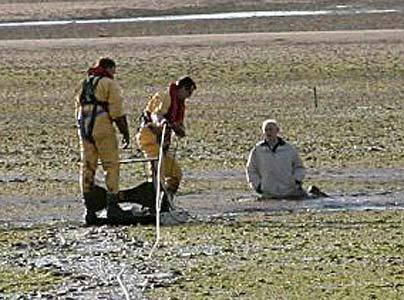Q is for Quicksand Traps
 In Fictionland, it's highly advisable to watch your step on any surface that looks remotely sandy. About 3% of all films made during the 1960s-- the peak of the trope-- show someone sinking in quicksand. The trope has lost its popularity somewhat, but still appears regularly in adventure films and TV series, including Indiana Jones and the Kingdom of the Crystal Skull.
In Fictionland, it's highly advisable to watch your step on any surface that looks remotely sandy. About 3% of all films made during the 1960s-- the peak of the trope-- show someone sinking in quicksand. The trope has lost its popularity somewhat, but still appears regularly in adventure films and TV series, including Indiana Jones and the Kingdom of the Crystal Skull.Depending on where you live, quicksand is a rare but real danger. Furthermore, depictions of desert quicksand far from an obvious water source are not entirely implausible: moving, aerated sand can have similar properties to liquid quicksand, as can large volumes of pouring grain. However, there are some key bits of misinformation that crop up in fiction which will do you no favours if you fall in. Here are the facts:Liquid quicksand does not 'suck' downward. Rather, it liquefies under the pressure of being stepped on, and re-solidifies around the intruding body parts. Sinking into quicksand is a slow process, because the human body is less dense than the sand-water mixture.Flailing your limbs will cause you to sink by further liquefying the quicksand under you.Trying to pull yourself straight out is unlikely to work. The force required is extract something vertically out of quicksand is very high.Lean backwards and get yourself into a 'back float' position. This should allow you to gently paddle yourself to the edge of the quicksand pool.Now you can consider yourself one step closer to B-movie survival preparedness.
Published on April 19, 2014 01:35
No comments have been added yet.



